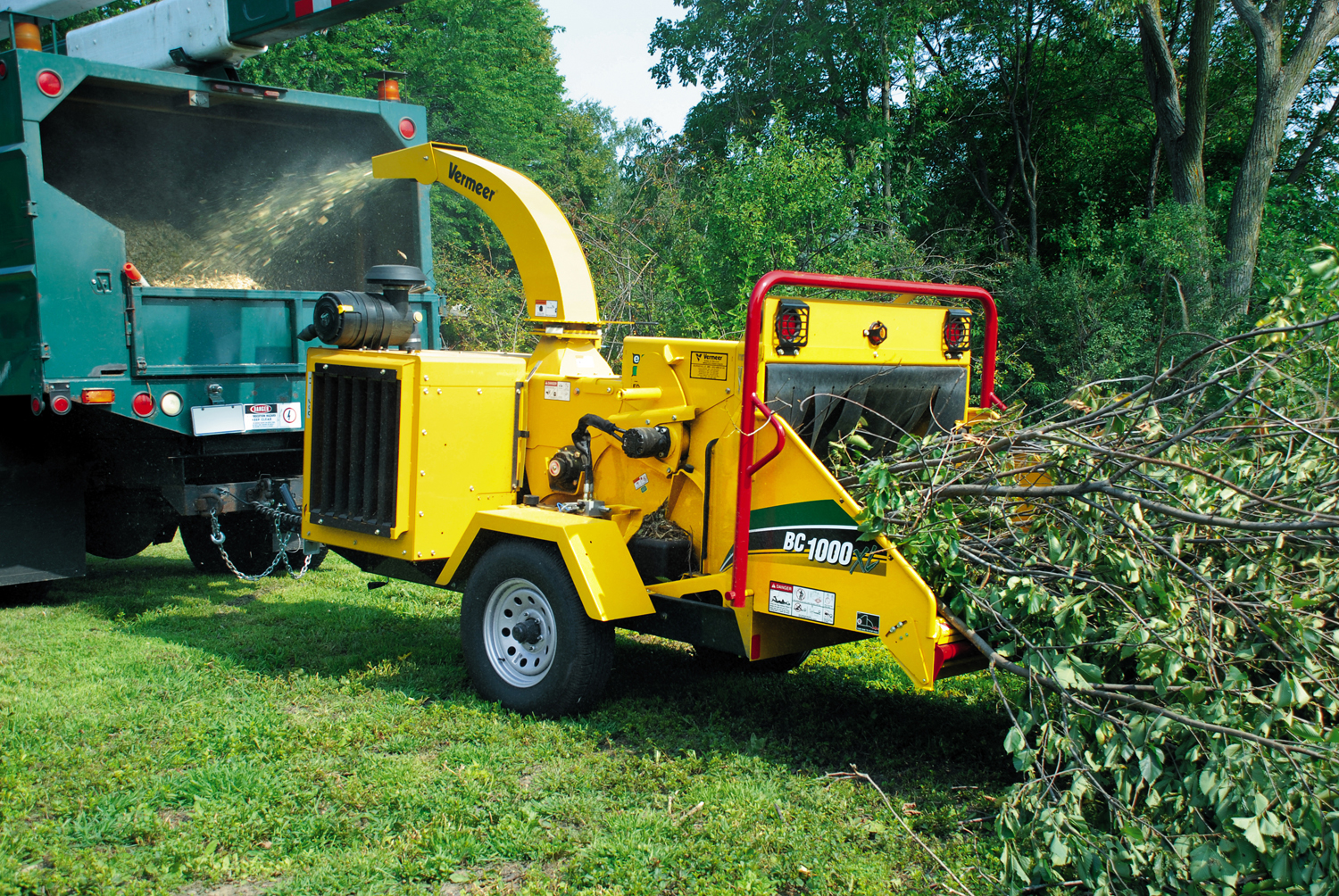Like all equipment in the tree-care industry, brush chippers will eventually reach a point when the hours of operation and tons of processed brush will cause a decline in machine performance.
Varying philosophies exist on when an upgrade is needed. Todd Roorda, sales manager for tree care, rental and landscape business units at Vermeer says trade-ins are often based on hours or a calendar year approach. Nonetheless, machine wear will show over time and it’s smart to watch for signs that it may be time for an upgrade.
Signs of stress
One of the earliest indications that a brush chipper may be due for an upgrade is the cutting performance of the chipper knives. Dull knives create a hammering effect that not only impedes productivity, but causes excessive vibration that over time leads to stress cracks.
New or used
Upgrading a brush chipper doesn’t necessarily mean buying new. Used chippers that are still in good condition and have retained high functionality can provide a good value, however newer models are often equipped with enhanced technology and features for improving productivity.
“Tier 4 has been the biggest change in the market; basically every chipper now will be at least Tier 4 Interim or Tier 4 Final. It’s different than what many operators have seen in a long time and we like to help them understand the technology and how these engines produce cleaner emissions,” Roorda says.
Two new advances that Vermeer stresses when talking to operators who are in the market for a new chipper are the Tier 4i engine compliance and EcoIdle® technology.
“EcoIdle is another feature that works to automatically reduce the rpm to idle levels after anywhere from 60 seconds to 5 minutes of inactivity to help reduce fuel consumption. It also helps reduce noise and greenhouse emissions,” Roorda says.
Right sizing equipment
Whether upgrading to a new or a used brush chipper, Roorda says the key is to right-size your equipment to your most common tasks.
“The best practice is to buy a machine with a capacity at 90 percent of your workload. For example, if you are an average contractor and most of your work is large takedowns, then you want to base your choice off that, but you also have some flexibility to handle larger or smaller material,” Roorda says. “If you buy a chipper that is too large, then you could be overspending. If you buy too small, then you limit the jobs you can complete.”
Being knowledgeable about wear indicators and features of new brush chippers can provide valuable insights to help plan ahead for equipment fleet upgrades.
